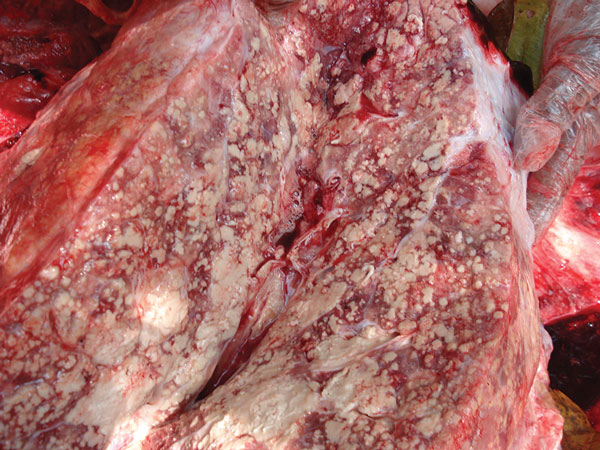Volume 23, Number 3—March 2017
Dispatch
Mycobacterium tuberculosis in Wild Asian Elephants, Southern India
Figure 2

Figure 2. Lung from a bull elephant, estimated at 30 years of age, Kurichiyat Range, India, 2010. Note the multifocal to coalescing pale tan-to-white firm nodules (granulomas) effacing much of the lung parenchyma. Some areas of white chalky mineralization are also present.
Page created: February 17, 2017
Page updated: February 17, 2017
Page reviewed: February 17, 2017
The conclusions, findings, and opinions expressed by authors contributing to this journal do not necessarily reflect the official position of the U.S. Department of Health and Human Services, the Public Health Service, the Centers for Disease Control and Prevention, or the authors' affiliated institutions. Use of trade names is for identification only and does not imply endorsement by any of the groups named above.